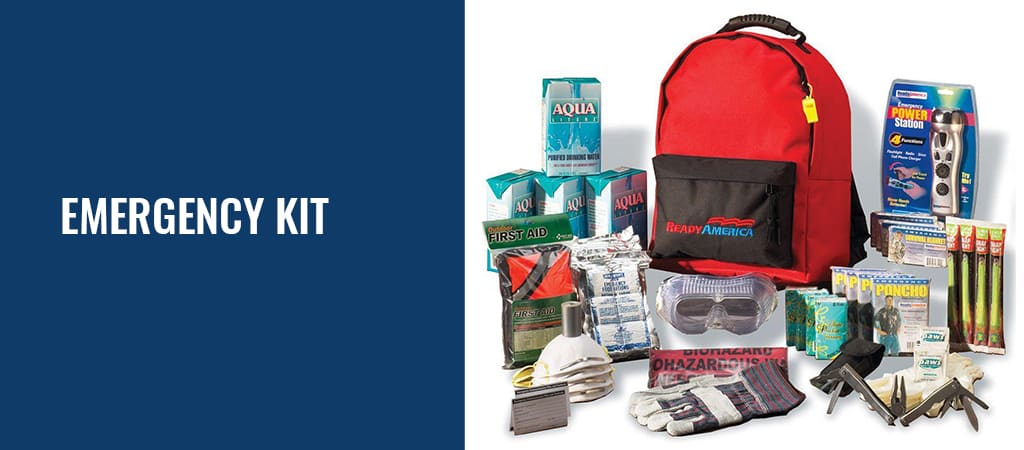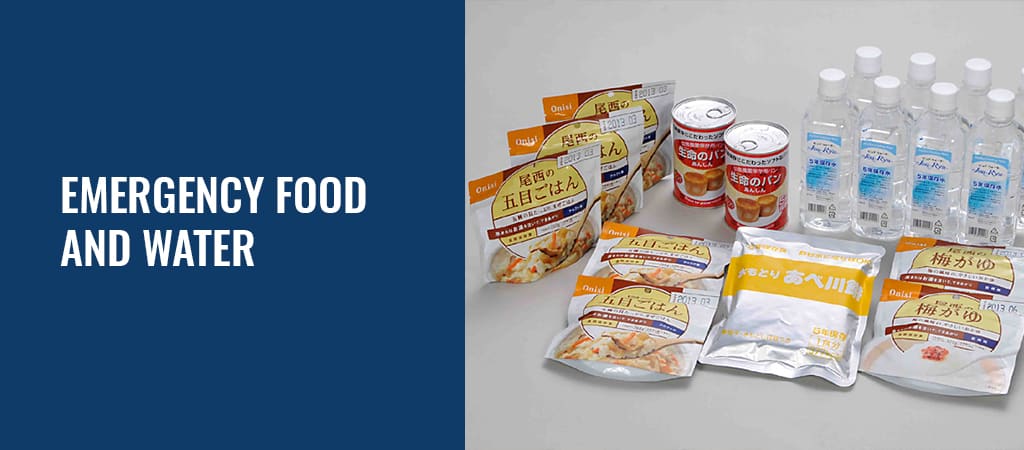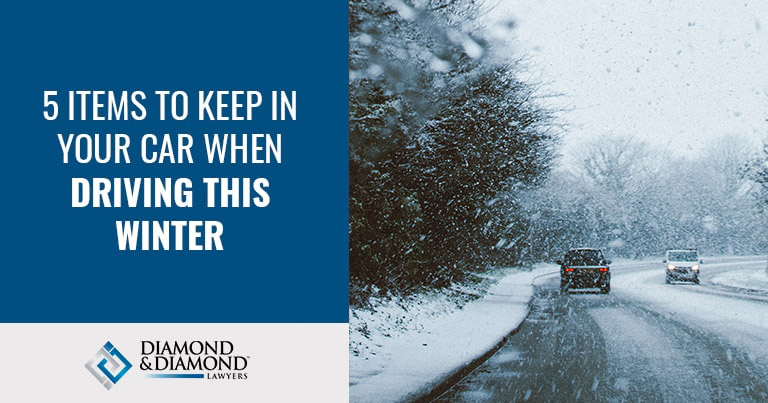Driving in winter is an unavoidable activity in Canada, and most people know how to handle themselves. Nevertheless, you can never be too safe, and there are new motorists on the Alberta road every year.
You can take some precautions when you’re driving in the frosty time of year. It’s always a good idea to:
- Check the weather forecast before driving
- Read the traffic and road reports
- Use winter tires on your car
Another essential aspect is to pack the necessary tools and items before taking a drive in icy weather. Taking this step can help prevent car accidents.
Item 1: Emergency Kit

When winter driving safety is on your radar, an emergency kit is essential. This can help you in times of need and should contain essential items required for all kinds of situations. Let’s take a look at what you should include.
First Aid Kit
An essential inclusion is a functioning first kit. It should cover all the major needs for injuries and emergencies but doesn’t need to be comprehensive.
Flashlights and Spare Batteries
The last thing you want is to get caught in the dark when you’re already freezing. Ensure that you have a flashlight, and spare batteries, so you’ll be able to see clearly.
Road Flares or Emergency Light
If you’re in a remote area, you might not have signals, or your phone might break on impact. Either way, you need a way to let people know where you are. Road flares and emergency lights are perfect choices.
Matches or Lighters
Having a heat source is always a good idea, and if you’re stuck in the cold, matches or a cigarette lighter could be handy.
Reflective Vest
Visibility can be paramount in a survival situation, and reflective vests are essential for nights. Ensure that you have one of these in your kit if you get out of the car when it’s dark.
Spare Cash and Change
While having cash to spare isn’t a concept many of us are familiar with, it’s good to have some funds tucked away in your emergency kit.
Item 2: Tools for Winter
Consider keeping tools in your vehicle that will help in cold and icy environments. Good examples of useful winter tools include snow shovels, tow chains, traction mats, rugs, and booster cables. Other good options are windshield washer fluid, fuel line antifreeze, a knife or scissors, and duct tape.
Item 3: Extra Winter Clothing and Footwear
You don’t want to be caught without extra clothing and blankets when you’re in the cold clutches of winter. If you’re in an emergency, you’ll need various items to keep you warm.
Good choices to store in your car include winter clothing like coats and jackets and warm headwear like beanies. Also, try to keep a pair of shoes or boots and an extra blanket (or two). You might also like to have some clean underwear, just in case.
You can avoid car accidents and motor vehicle-related injuries during winter with the right preparation. But if you do get hurt, consult with an Alberta personal injury lawyer now from Diamond & Diamond.
Item 4: Emergency Food and Water

There’s no guarantee that you’ll be able to get to a place where there is food and water in an emergency. It’s a good idea to keep a stash in your car.
Where liquids are concerned, you don’t want to leave just anything in your car. Consider bottled water and juice, but avoid sodas and other carbonated drinks.
On the food side of things, you have a lot of options. You can easily fit a selection of granola bars or jerky into the cubbyhole (also good if you miss breakfast).
In case of a longer emergency, consider stocking canned food and a can opener (a spoon or fork might come in handy too). Different snacking materials include dried fruit, nuts, and crackers.
Item 5: Emergency Communications and Navigation
When disaster strikes, you need a means of contacting help. Mobile phones are a brilliant option but often have short battery lives. Sometimes, your communication needs can become tricky in an emergency.
One item that might be good to have around is a small, cheap older-style mobile phone with a long battery life. Smartphones can do a lot, but they use power quickly.
Other fantastic options are a power bank for your mobile and a portable wifi router. You should also invest in a road map and compass so you can navigate your way somewhere if you need to.
Finally, a battery-powered radio will put you in contact with the outside world.
To proactively avoid car accidents, you can also consult with an Alberta personal injury lawyer from Diamond & Diamond. You can:
- Visit our Calgary or Edmonton office
- Call our 1-800 number anytime, any day
- Fill in the online contact form found on our website
Pro Tip:
“Never go out on a drive during winter if your mobile phone’s battery power is about to go low.”


